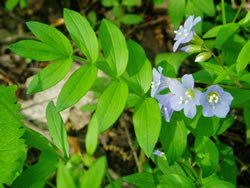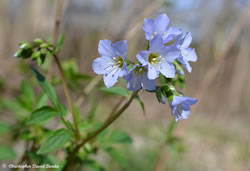Plant of the Week
 Polemonium reptans range map. USDA PLANTS Database.
Polemonium reptans range map. USDA PLANTS Database.
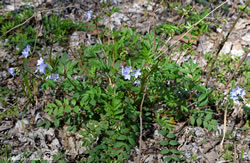 Jacob’s Ladder mass in bloom. Photo by Christopher David Benda.
Jacob’s Ladder mass in bloom. Photo by Christopher David Benda.
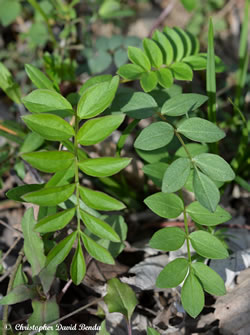 Jacob’s Ladder leaves. Photo by Christopher David Benda.
Jacob’s Ladder leaves. Photo by Christopher David Benda.
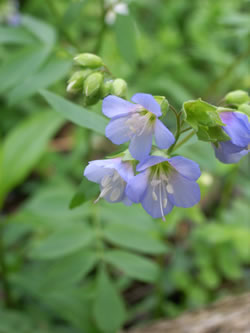 Close-up of flowers of Jacob’s Ladder. Photo by Christopher David Benda.
Close-up of flowers of Jacob’s Ladder. Photo by Christopher David Benda.
Jacob’s Ladder (Polemonium reptans)
By Christopher David Benda
This wildflower is a spring ephemeral called Jacob’s ladder. The name “Polemonium” refers to King Polemon of Pontus. This is the type genus of the Phlox family (Polemoniaceae). The species epithet “reptans” means “creeping” referring to the creeping habit of this plant. The leaves are pinnately compound, resembling a ladder, referring to a ladder seen in a dream by the biblical Jacob: thus the name Jacob’s ladder.
This herbaceous perennial is a spring ephemeral wildflower. Its flowering stems are low to the ground, but also tend to droop to the side, giving the plant a sprawling look. The flowers are a shade of blue that is seldom seen in the forest. Comprised of five petals that are bell-shaped (campanulate), they occur in loose panicles of nodding inflorescences. The stigma extends beyond the stamens, preventing self-pollination.
Bees and lepidopterans pollinate the flowers. Fertilized flowers become capsules that contain only a few seeds. There are few known medicinal uses, but Native Americans would treat colds, coughs, and ailments of the lungs with infusion of the roots with wine.
This perennial plant is found in rich, shaded, moist woods. Although it is a spring ephemeral, it seems to persist vegetatively well into the summer. It spreads by seeding itself, so it is a common plant in the Midwest, Appalachian, and Great Lakes regions.


